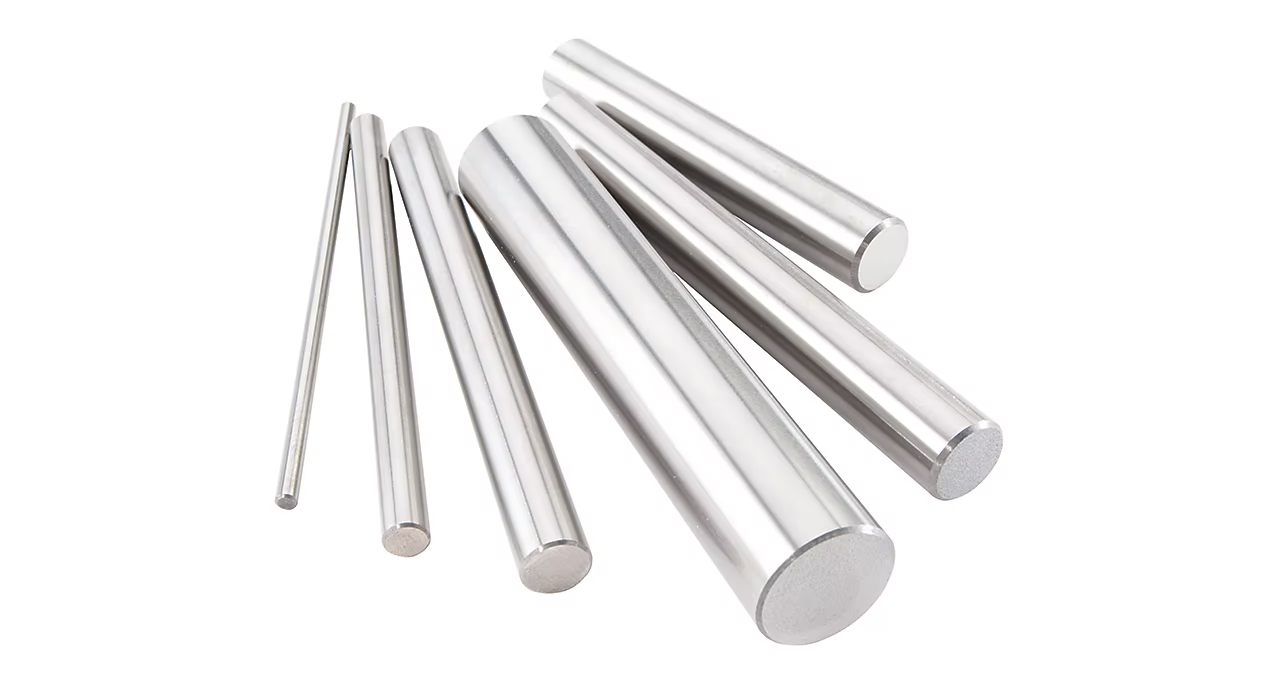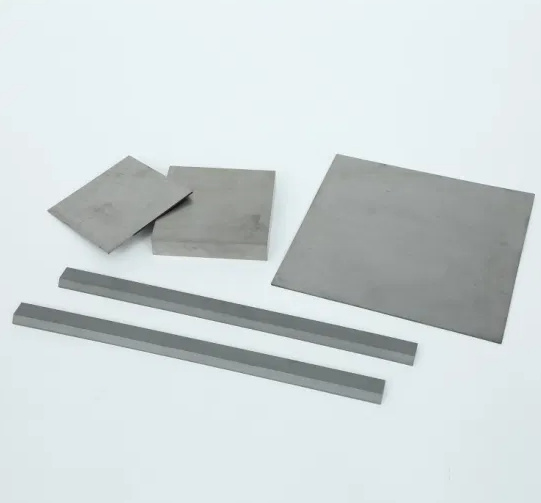Вставки из цементированного карбида, also known as tungsten carbide inserts, are a critical component in the world of metalworking and machining. They are indispensable for their durability, efficiency, and versatility. If you’re diving into the world of machining or simply looking to upgrade your tooling arsenal, this guide will walk you through everything you need to know about cemented carbide inserts. From their types and applications to material properties and selecting the right one, let’s get started.
Overview of Cemented Carbide Inserts
Cemented carbide inserts are cutting tools used extensively in manufacturing and metalworking. They consist of a composite material made up of carbide particles bonded together by a metallic binder. This unique composition gives them superior hardness, wear resistance, and the ability to withstand high temperatures, making them ideal for cutting, drilling, and shaping metal materials.
Why Cemented Carbide?
- Долговечность: Cemented carbide inserts are incredibly durable and can withstand heavy usage.
- Эффективность: They maintain sharpness and cutting efficiency over long periods.
- Универсальность: Suitable for a wide range of materials and machining operations.
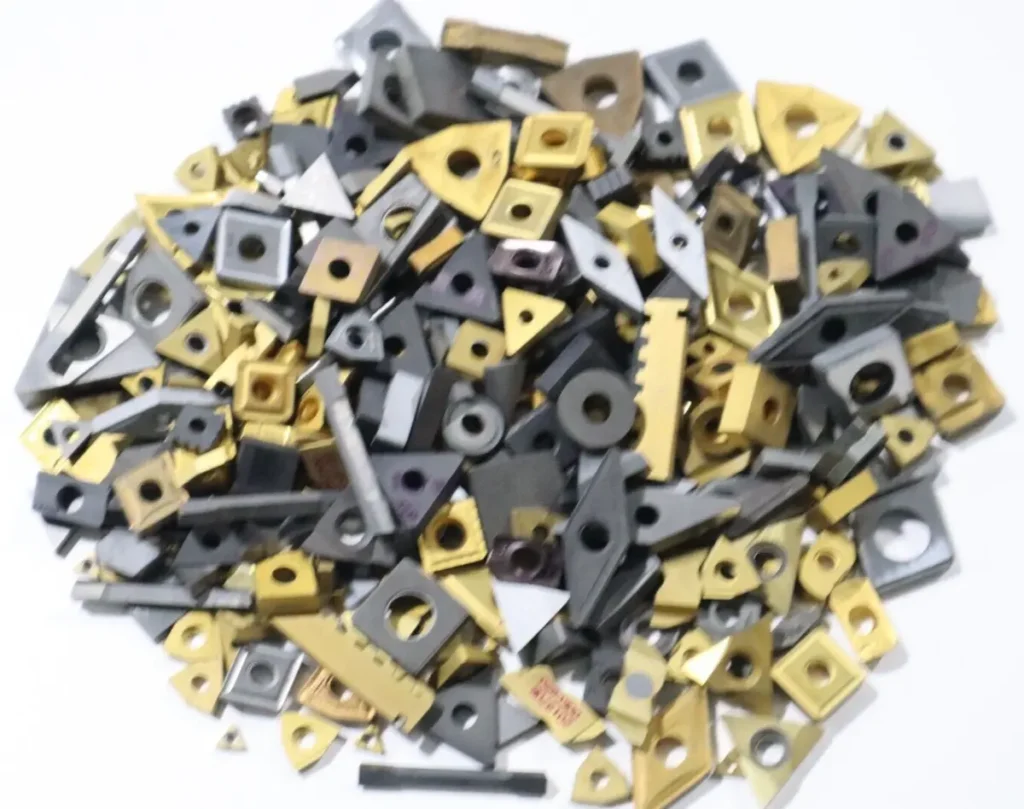
Типы Цементированные твердосплавные вставки
There are various types of cemented carbide inserts designed for specific applications. Here’s a breakdown of some common types:
| Тип вставки | Описание |
|---|---|
| CNMG | General-purpose insert with 80° cutting edge, suitable for roughing and finishing. |
| DNMG | 55° cutting edge insert, ideal for finishing operations. |
| TNMG | Triangular insert, versatile for both roughing and finishing. |
| WNMG | Trigon shape with 80° cutting edge, used for roughing and interrupted cuts. |
| SNMG | Square insert, very strong, used for heavy-duty operations. |
| CCMT | Single-sided insert with 80° cutting edge, used for turning applications. |
| VBMT | Diamond-shaped insert, used for fine finishing. |
| RCMT | Round insert, ideal for profiling and contouring. |
| APKT | Rectangular insert, used for milling applications. |
| RPGN | Round insert, great for profiling soft materials. |
Области применения пластин из цементированного карбида
Cemented carbide inserts are used in a variety of machining operations. Here’s a look at their applications:
| Приложение | Insert Types | Подробности |
|---|---|---|
| Развернуть | CNMG, DNMG, CCMT, VBMT | Turning operations involve rotating the workpiece while a stationary cutting tool removes material. |
| Фрезерование | APKT, RPGN | Milling uses a rotating cutting tool to remove material from a workpiece in various directions. |
| Бурение | WNMG, SNMG | Drilling operations create round holes in a workpiece using a rotating drill bit. |
| Скука | CNMG, VBMT | Boring enlarges existing holes to achieve greater accuracy. |
| Профилирование | RCMT, RPGN | Profiling operations create complex contours and shapes on a workpiece. |
| Нарезание резьбы | ТНМГ, ВБМТ | Threading inserts are used to cut screw threads into a workpiece. |
| Нанесение канавок | SNMG, CCMT | Grooving involves cutting narrow channels into a workpiece. |
| Расставание | SNMG, WNMG | Parting operations cut off a section of a workpiece. |
| Face Milling | APKT, CCMT | Face milling uses a cutter to remove material from the surface of a workpiece to create a flat surface. |
| Interrupted Cutting | WNMG, SNMG | Inserts designed for interrupted cutting can withstand shocks and impacts from irregular cuts. |
Свойства материалов Цементированные твердосплавные вставки
Understanding the material properties of cemented carbide inserts is crucial for selecting the right one for your application.
| Недвижимость | Описание |
|---|---|
| Твердость | Cemented carbide inserts are extremely hard, typically measuring 8.5-9 on the Mohs scale. |
| Износостойкость | High resistance to wear, making them ideal for cutting and abrasive applications. |
| Жесткость | Despite their hardness, they have sufficient toughness to withstand impact and shocks. |
| Термостойкость | Able to maintain hardness and performance at high temperatures, often exceeding 1000°C. |
| Коррозионная стойкость | Resistant to corrosion, extending their lifespan in various environments. |
| Теплопроводность | Good thermal conductivity helps in heat dissipation during cutting operations. |
| Плотность | High density, typically between 14.5-15.0 g/cm³. |
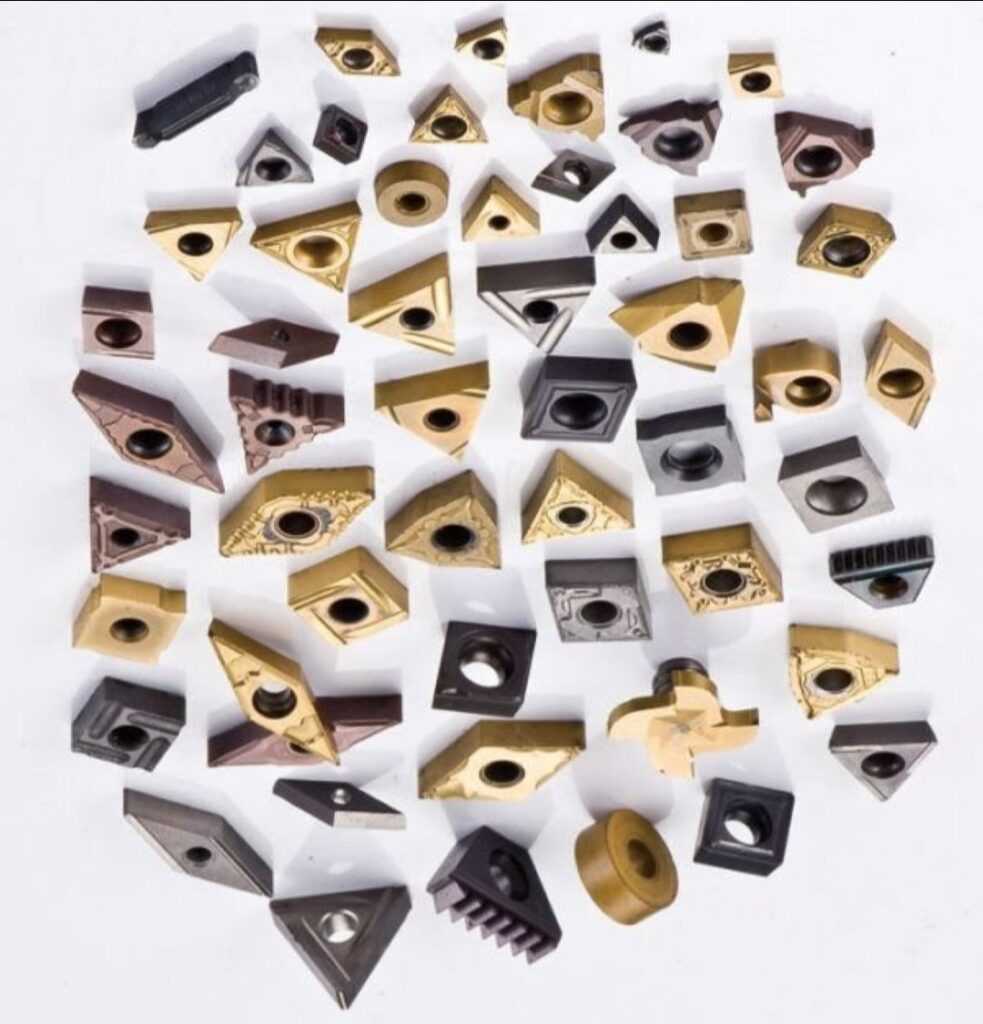
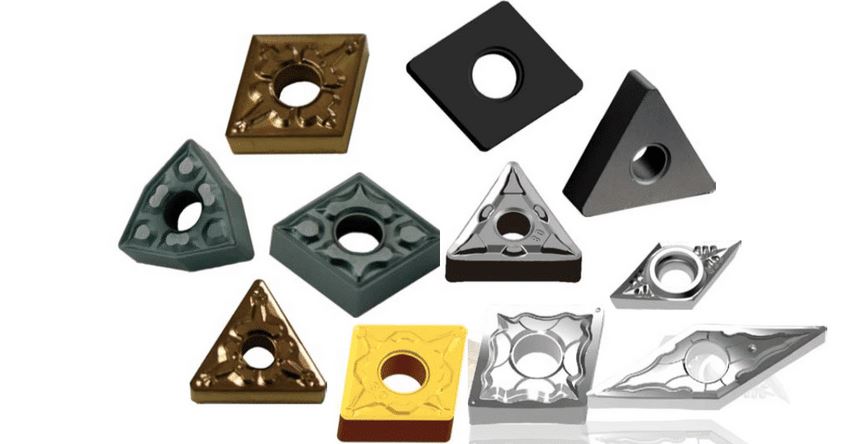
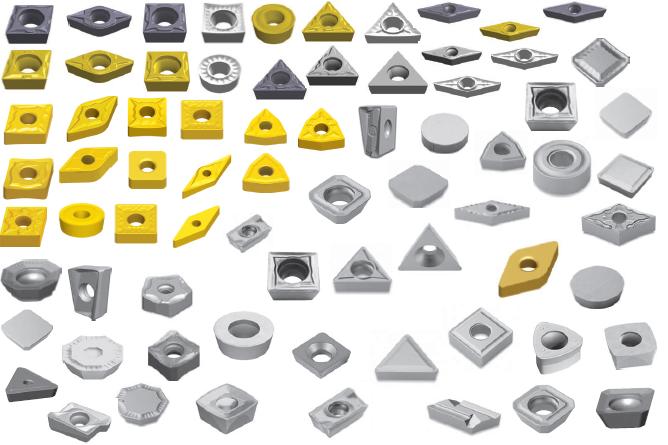

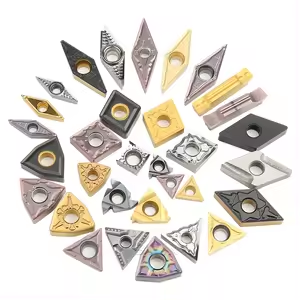
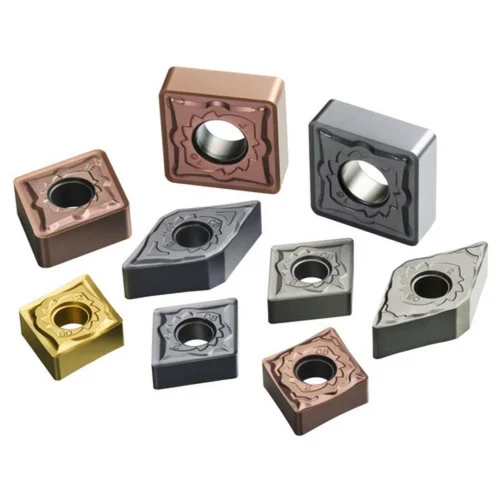
Состав и характеристики
The composition of cemented carbide inserts affects their properties and performance.
| Компонент | Описание |
|---|---|
| Карбид вольфрама | Main component, provides hardness and wear resistance. |
| Кобальт | Действует как связующее, обеспечивая прочность и ударопрочность. |
| Карбид титана | Enhances hardness and thermal resistance, especially in high-speed cutting applications. |
| Карбид тантала | Increases resistance to wear and deformation, especially at high temperatures. |
| Карбид ниобия | Improves the grain structure, enhancing toughness and resistance to thermal shock. |
Твердость, прочность и износостойкость
These three properties are crucial in determining the suitability of a cemented carbide insert for a specific application.
| Недвижимость | Описание |
|---|---|
| Твердость | Measured using the Rockwell or Vickers scales, indicating the material’s resistance to deformation. |
| Прочность | Indicates the material’s ability to withstand mechanical stress without breaking or deforming. |
| Износостойкость | Refers to the material’s ability to resist wear and abrasion during cutting operations. |
Технические характеристики, размеры, формы и стандарты
Cemented carbide inserts come in various sizes, shapes, and standards to meet different machining needs.
| Спецификация | Подробности |
|---|---|
| Стандарты ISO | ISO 1832: Specifies dimensions and tolerances for carbide inserts. |
| Формы | Triangle, square, diamond, round, rectangular, trigon, etc. |
| Размеры | Available in various sizes to fit different tool holders and applications. |
| Классы | Different grades offer varying levels of hardness, toughness, and wear resistance. |
Поставщики и ценовая политика
Finding reliable suppliers and understanding pricing is crucial for making an informed purchase.
| Поставщик | Регион | Ассортимент продукции | Цена (приблизительно) |
|---|---|---|---|
| Kennametal | Глобальная | Wide range of carbide inserts | $5 – $50 per insert |
| Sandvik Coromant | Глобальная | Высокопроизводительные вставки | $10 - $60 за вставку |
| Mitsubishi Materials | Глобальная | Various types and grades | $7 – $45 per insert |
| Sumitomo Electric | Глобальная | Advanced cutting tools | $8 – $55 per insert |
| ИСКАР | Глобальная | Innovative carbide inserts | $9 – $65 per insert |
| Инструменты Walter | Глобальная | Comprehensive range | $6 - $40 за вставку |
| Инструменты Seco | Глобальная | High-precision inserts | $7 – $50 per insert |
| YG-1 | Глобальная | Affordable, quality inserts | $5 – $35 per insert |
| Tungaloy | Глобальная | Advanced material inserts | $10 – $55 per insert |
| Kyocera | Глобальная | High-durability inserts | $8 - $50 за вставку |
Выбор правильного Цементированные твердосплавные вставки
Choosing the right cemented carbide insert involves considering several factors.
| Рассмотрение | Подробности |
|---|---|
| Обрабатываемый материал | Different materials require different insert properties. |
| Type of Machining | The type of operation (turning, milling, drilling) dictates the insert shape and properties needed. |
| Условия резки | Speed, feed rate, and depth of cut are crucial factors. |
| Совместимость с держателями инструментов | Ensure the insert fits the tool holder being used. |
| Стоимость | Balance between cost and performance to meet budgetary constraints. |
Преимущества и ограничения
Comparing the advantages and limitations of cemented carbide inserts helps in making an informed decision.
| Аспект | Преимущества | Ограничения |
|---|---|---|
| Твердость | Extremely hard, maintaining sharpness over long periods. | Может быть хрупкой и склонной к сколам при неправильном использовании. |
| Износостойкость | High wear resistance, reducing the need for frequent replacements. | May be more expensive compared to other materials. |
| Термостойкость | Retains properties at high temperatures, suitable for high-speed operations. | Requires precise cooling and lubrication to avoid thermal damage. |
| Универсальность | Подходит для широкого спектра материалов и применений. | Specific inserts needed for different applications, adding to inventory complexity. |
| Долговечность | Long lifespan, reducing downtime and increasing productivity. | High initial cost may be a consideration for some users. |

Вопросы и ответы
What are cemented carbide inserts used for?
Cemented carbide inserts are used in various machining operations such as turning, milling, drilling, and boring. They are preferred for their hardness, wear resistance, and ability to maintain performance at high temperatures.
Как выбрать подходящую твердосплавную вставку для моей задачи?
Selecting the right carbide insert involves considering the material to be machined, the type of machining operation, cutting conditions, tool holder compatibility, and cost.
What are the benefits of using cemented carbide inserts?
The main benefits include high hardness, excellent wear resistance, heat resistance, versatility, and durability. These properties result in increased productivity and longer tool life.
Можно ли использовать твердосплавные вставки повторно?
Yes, carbide inserts can often be reused after re-sharpening. However, the extent of reuse depends on the insert’s condition and the specific machining requirements.
What are the common grades of cemented carbide inserts?
Common grades include C2, C3, C5, and C7, each offering different levels of hardness, toughness, and wear resistance suitable for specific applications.
How should I store cemented carbide inserts?
Store them in a cool, dry place away from direct sunlight and moisture. Using appropriate storage containers can help prevent damage and maintain their quality.
Are there any environmental considerations with carbide inserts?
Cemented carbide inserts are made from materials that can be recycled. It’s important to follow proper recycling practices to minimize environmental impact.
What are some common brands of cemented carbide inserts?
Some popular brands include Kennametal, Sandvik Coromant, Mitsubishi Materials, Sumitomo Electric, ISCAR, Walter Tools, Seco Tools, YG-1, Tungaloy, and Kyocera.
How do carbide inserts compare to other cutting tools?
Compared to other cutting tools, carbide inserts offer superior hardness, wear resistance, and heat resistance. They are more durable and efficient but may come at a higher initial cost.
What is the average lifespan of a carbide insert?
The lifespan varies depending on the application, material being machined, and cutting conditions. However, carbide inserts generally last longer than other cutting tools due to their durable properties.
Заключение
Cemented carbide inserts are a cornerstone of modern machining, offering unmatched durability, efficiency, and versatility. Whether you’re a seasoned professional or just starting in the world of machining, understanding the types, applications, material properties, and selection criteria for carbide inserts can significantly impact your productivity and machining success.
By choosing the right carbide insert, you can enhance your machining operations, reduce downtime, and achieve superior results. Explore the various options, understand your specific needs, and make informed decisions to leverage the full potential of cemented carbide inserts in your projects.

